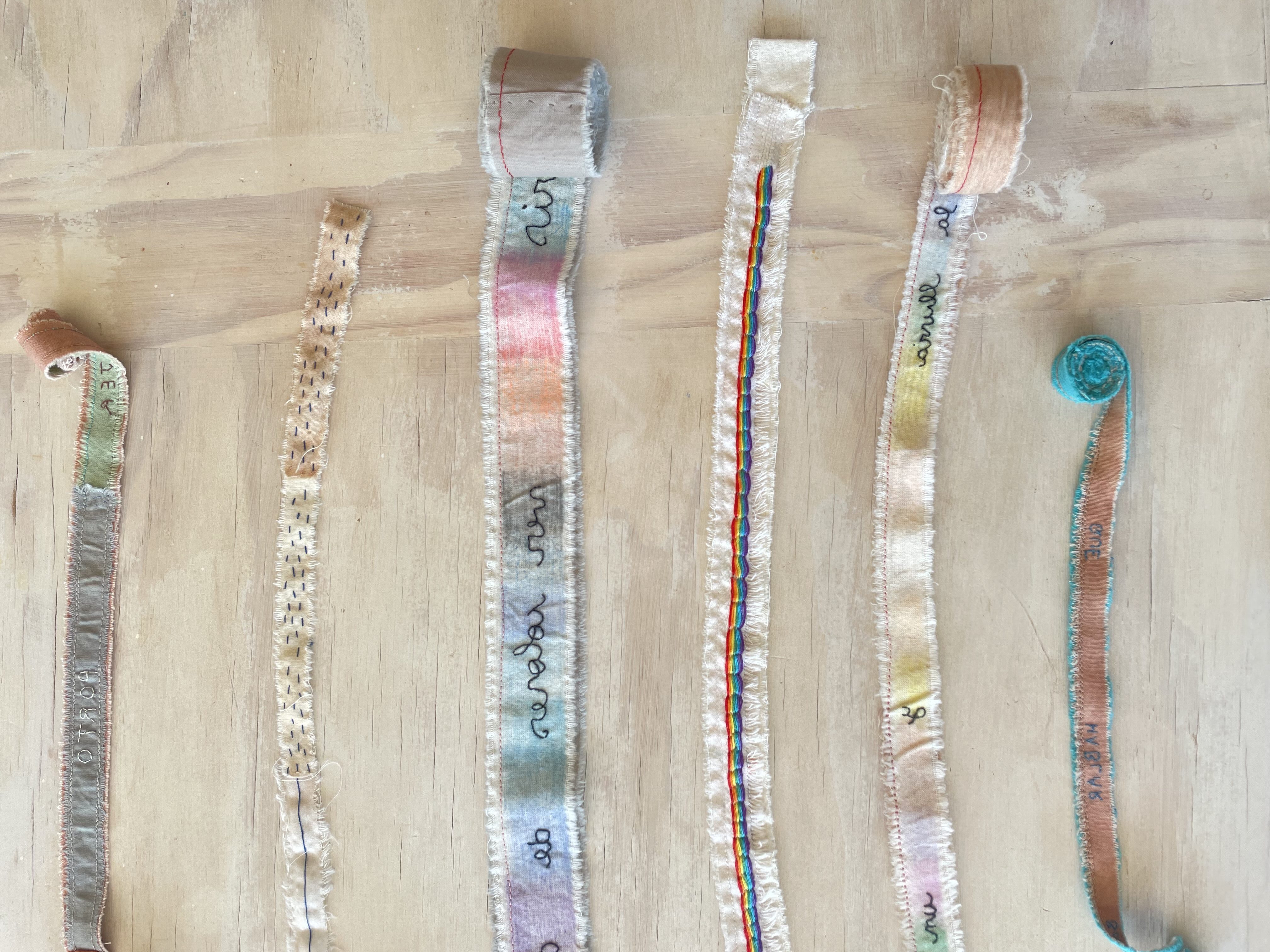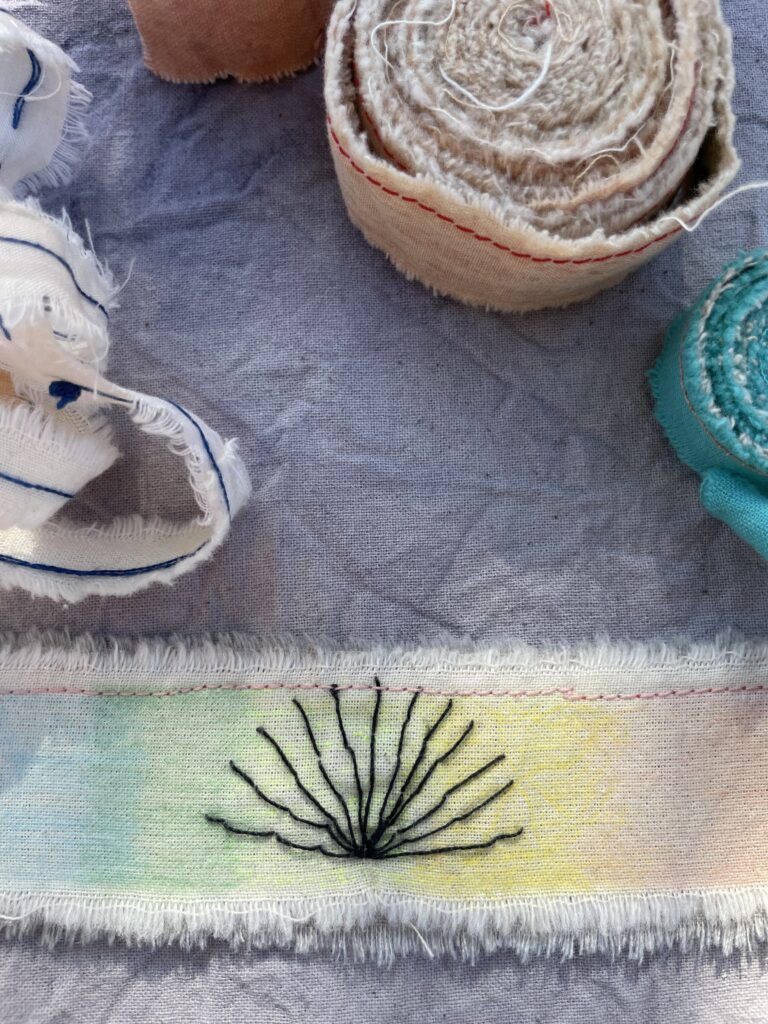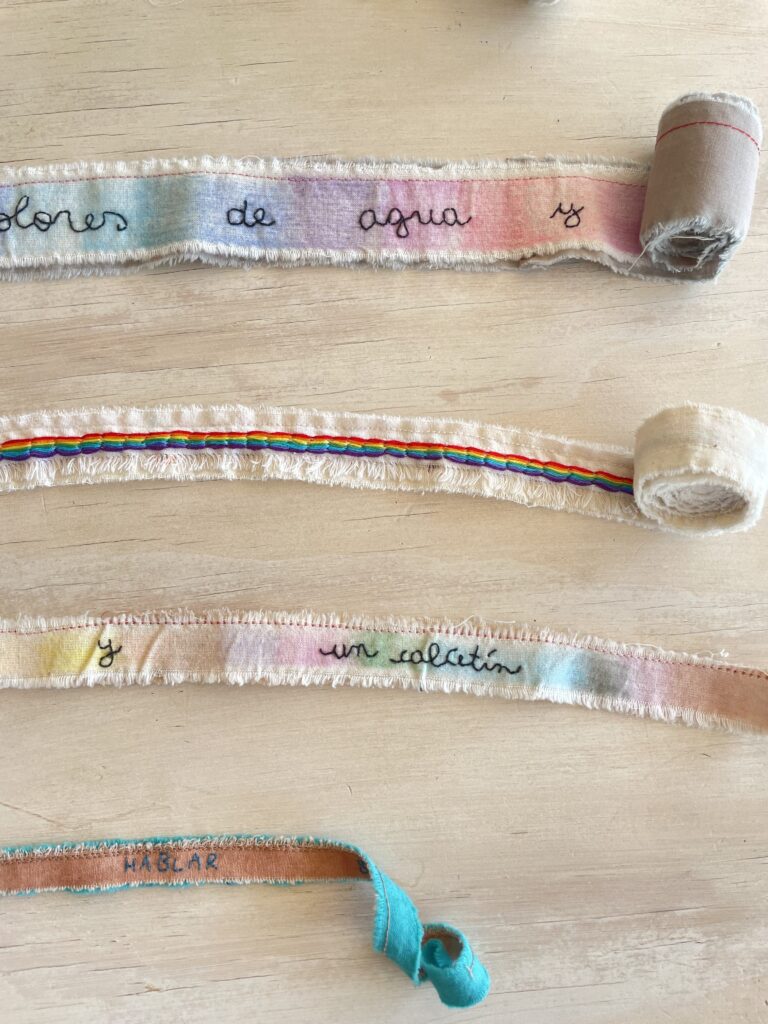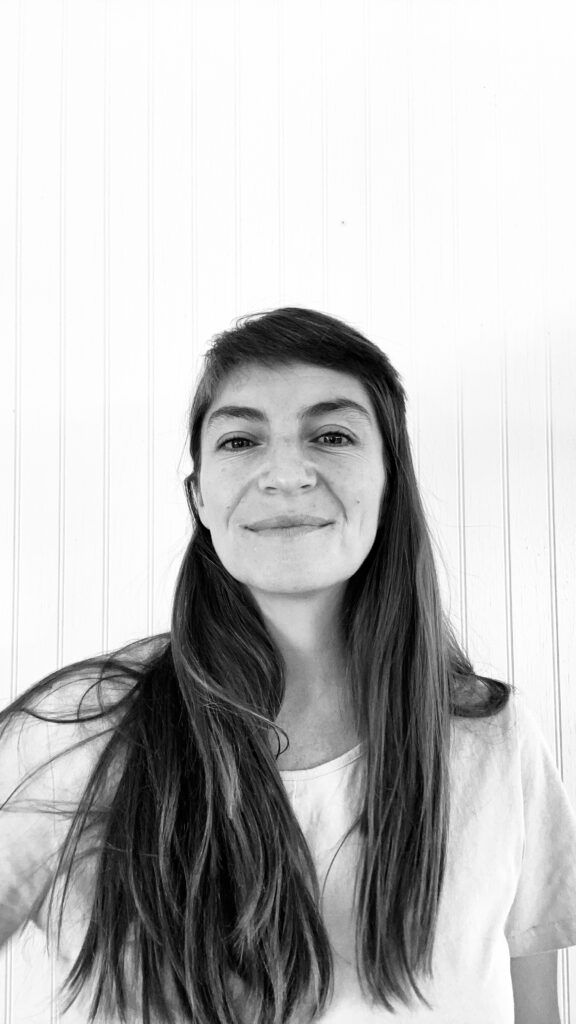
María José Durán’s tapestries and soft, sculptural books are dyed, cut, stitched, and shaped to record and reflect the natural world of her native Chile. Using up-cycled textile waste, she combines natural dyes with Chilean embroidery and appliqué commonly used in the practice of creating arpilleras. Durán takes inspiration from her children, their wonder and excitement as they discover the world around them for the first time.
In a virtual class on Friday, September 13th, Durán will join us to create a long spiral-shaped book. Using playful and unusual textile materials, students will learn to transform fabric into a colorful and soft artifact with the potential to write and illustrate narratives inspired by the shape of the scroll itself. You can read our conversation with Durán and sign up below to join us.

I know that, with the fabric book, you were inspired by fabric books for children, their textures and tactility of those. What was the inspiration for the Eternal Book?
The Eternal Book started as a project that I was working on with two friends. We gave ourselves different assignments during quarantine in March of 2020. We wanted to create a specific object to soothe all the intensity and uncertainty that we were experiencing, so we wanted to create an object that could translate and express our daily experiences, to create a log of them. I always work with fabric scraps, and I’m always thinking about life and making art based on daily routine. I was at my parents’ house, and they have a big garden. And my kid was little at the time so I wanted to create something that can be played with. It started out as just two pieces of long fabric, one on top of the other. And then when I started to roll it, I realized it looked like a snail shell. When I started to write on it, to create a text with it, it was the story of all the elements that we were encountering on our quarantine walks. We would see a snail, or a mushroom, and we’d record it in the book. It recorded pleasant experiences, because we were experiencing so much trauma and drama in those days. So it was a sort of a pacifier. A comfort object.
Of course COVID is still around, but we’re several years into the pandemic and no longer in quarantine. What do you hope that your students will take from the class?
What I like about the eternal book is that it has the ability to become many different things and incorporate many different elements according to the story that the maker wants to write. I have had students that have rolled a huge length of cloth and they ended up having a large textile disc that feels eternal when you unroll it. So it’s a very playful object. It’s also a great reminder that you can really create something very special out of scraps. You don’t need many materials to create it, and it helps you rethink textile waste. For me, it’s also very connected with how kids get surprised and excited over the smallest things. They can connect with a very rudimentary object and make it something transcendent.
I love that there’s an immense amount of playfulness in your work, and I wanted to get a sense for your process. When you put together a design, are you starting with a color or a shape in mind?
Color is a huge one for me, it’s more important than fabric. The shape can change as you go along, but the color tends to be the most powerful aspect of the process. With reverse applique, I like to allow myself the space to lose control because it’s hard to plan how the result will look even if you’ve done it before. I love to see the shapes that unfold while you’re working on a design, because seriously, there is no control when you’re working on these three layer appliques. You also start to see new possibilities while you’re working where you realize that you could do something else you hadn’t seen before. So you access a new territory, going through it, and discovering it as you go.


Our Teacher
María José Durán is a Chilean Fulbright alumni, visual artist, textile researcher, and art teacher with an MFA from the School of Visual Arts. She explores embroidery and natural dyes on fabrics to create landscapes and fabric books of poetic, playful and painterly sensibility that reflect on the natural world. She has guided community and female collective projects funded by Fondart and the FNDR funds in Chile as well as projects funded by private local and foreign commissions. Her researched-based embroidery workshops aim to rescue women’s memories around local ecosystems, rural living and traditions. Her work has been exhibited at museums and galleries in the US, Colombia, Canada and Chile and it has been published in magazines and film. Her textile work is part of private collections in New York, Miami, Vancouver, Berlin, Beirut, Mexico City and Santiago.
